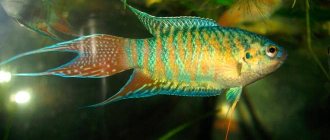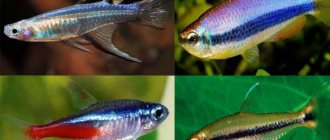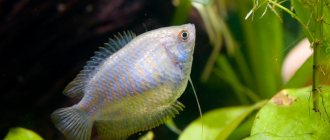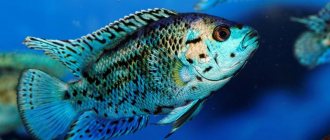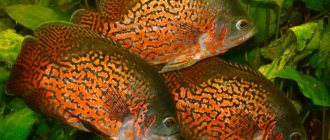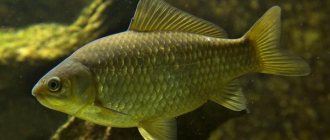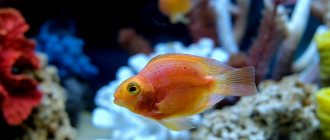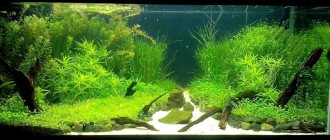Labyrinth fish are underwater inhabitants that can breathe air. There are quite a lot of species of such representatives, but some of them are especially popular in modern aquarium hobby and are loved for their bright colors and extraordinary behavior. In order for unique pets to delight their owners with their beauty for a long time, it is necessary to know the nuances of their maintenance.
Description, origin and natural range
Today, this family, part of the Anabantiformes order, has changed its name to Anabantoidei, but fans still prefer to call such pets Labyrinth fish.
A distinctive feature of these individuals is the presence of a special respiratory organ - a labyrinth. It is formed by several plates, abundantly penetrated with blood vessels. They are located in the epibranchial region, at the site of expansion of the epibranchial bone of the first branchial arch.
Due to the labyrinth organ, these fish can fully exist in reservoirs poorly supplied with oxygen, and even remain outside the aquatic environment for some time. Its mechanism of action is that this chemical element, necessary for life, is absorbed into the blood directly when air is inhaled and allows fish to breathe without the help of gills, but on the condition that the plates always remain wet.
The labyrinth organ is not fully formed at the birth of the fish; it develops gradually as it grows; the fry and juveniles breathe only with gills.
Photo gallery of Labyrinth fish:
Slither-like fish are endemic to tropical freshwater reservoirs of eastern, southeastern and southern Asia and Africa, and are found precisely in slow-moving waters with low oxygen content.
The lower the oxygen content, the larger the size of the labyrinthine organ. In fast rivers rich in this chemical element, the labyrinth is poorly developed, which negatively affects the condition of the fish, so this type of breathing, although additional, is mandatory for the full existence of these underwater inhabitants.
If they go too long without getting air, they may die.
For the most part, Labyrinth fish are carnivorous, feeding mainly on aquatic organisms and carrion, although they do not refuse algae. They are predominantly diurnal, although some African species are active at dusk and at night. And Trichogaster kills its victims (flying insects and small birds) by spitting a stream of water from its mouth and knocking down the prey in flight.
Many varieties of Creepers spawn by building foam nests, but some use other methods of reproduction, including brooding their eggs in their mouths.
Nests from air bubbles, plant particles and water debris are created mainly by males, and they actively guard and protect the offspring and the female during the period of preparation for spawning.
It is also more common for males to carry eggs in their mouths, releasing the fry only 10-30 days after spawning.
The morphology and body size of Labyrinth fishes are quite varied, but for the most part they are medium-sized individuals (up to 19-20 cm in length) with an elongated and slightly laterally flattened body, small head, mouth and eyes, developed fin plumage, and the presence of thread-like pelvic fins .
The color of Creeper-shaped varieties is varied, but more often it is bright and clearly visible in the dark. Males for the most part are more expressive. Mostly these are quite peaceful fish, living in families or small schools. Their character becomes more aggressive (especially in males) during courtship, spawning and nursing of fry, since the parental instincts of these underwater inhabitants are very strong.
Grunting gourami (Trichopsis schalleri, Trichopsis vittata, Trichopsis pumilus)
The grumbling gourami is an interesting labyrinthine fish. She has an elongated body, slightly flattened laterally. The head is pointed, the pectoral fins have turned into thin threads. Adult fish are colored quite brightly: there are dark horizontal stripes on the light body, and fins with neon sparkles. The grumbling gourami is peaceful, but sometimes the males can sort things out among themselves by making sounds reminiscent of the cracking of branches. Hence the name of the fish. They can also “grumble” both in mating games and in everyday life. Perhaps that is why this wonderful fish has not become widespread in the aquarium hobby. Gourami grow about 6-7 cm.
Mr. Tail recommends: variety of species
Here are some of the most interesting species of aquarium Labyrinth fish.
Brunei beauties
Betta macrostoma is a fighting cockerel, a temperamental, bright fish that attracts the attention of aquarists not only with its beauty, but also with its extraordinary behavior.
This species is native to the waters of Kalimantan (Borneo) and Brunei. Due to human activity, the natural population of the Brunei beauty has greatly decreased and today this underwater inhabitant is even listed in the international Red Book. The Sultan of Brunei has imposed a ban on catching and exporting fish outside the state.
This Cockerel lives in small rivers and streams with clean, transparent water and strong currents, located in the zone of tropical rainforests. Their bottom is abundantly strewn with decaying leaves and other organic matter; branches of luxurious coastal vegetation usually hang over the water, creating constant twilight.
The maximum length of an adult specimen is about 10-11 cm. Males are slightly larger and brighter. The main color is red, there is a snowy border along the edge of the fin plumage, and charcoal patterns on the head and fins. Females are a faded grayish color.
These are predators that hunt shrimp and invertebrates in nature, and also eat zooplankton.
They live in a pack with a clearly defined hierarchy. There is always an alpha male, constantly defending his rights to females and his dominant position over competing males.
Females also sort things out among themselves, fights happen even among them.
Therefore, it is better to keep a couple in a small artificial pond at home; in relation to other species of fish, they behave peacefully and get along well with non-aggressive underwater inhabitants.
Breeding can be difficult if adults of the opposite sex are combined. For a harmonious relationship, they must grow together, then there will be no quarrels and conflicts and offspring will appear regularly.
These Cockerels do not stand on foam nests; the male carries the eggs in his mouth.
Betta Acara
Betta akarensis are also classified as Bettas and are named after the Akar River (Sarwak State in Borneo), where they were discovered. Their habitats are typical for Labyrinth fish - shaded rivers and streams flowing in tropical forests.
They grow up to 8-9 cm (males). Females are smaller, with silvery scales, short translucent fins, and have pale dark longitudinal stripes on the body.
Males are bright, the main background is deep burgundy, the plumage is elongated with a green border.
In their natural habitat they are carnivorous, but when kept in aquariums they do not refuse plant food.
Like all Cockerels, they clearly build a hierarchy in the flock; clashes within the group are inevitable.
During spawning, the male carries the eggs in his mouth for three weeks, while the female guards the father and offspring during this time. Even when the young swim, the parents' care for them continues.
Betta Albimarginata
Betta albimarginata or White-rimmed Bettas are perhaps the smallest fish in this family. An adult male barely grows to three centimeters.
Endemic species of the Subuku River (Borneo). Males are red. The fin plumage is black with a snowy border. Females are gray-black with dark markings.
Carnivorous in nature, omnivorous when kept at home.
In terms of the method of gregarious living and reproduction (the male incubates the eggs in his mouth), they are no different from other fighting types of Cockerels.
Betta Leahy
Betta lehi are named after the scientist Charles Lech (Sarvak Museum).
Endemic species of the Kapuas River (West Kalimantan). They inhabit not only tropical streams and rivulets, but also peat bogs.
Males are bright with a predominance of turquoise shades in color, grow up to 6-7 cm. Females are pale and smaller.
Omnivorous and schooling fish of a completely peaceful nature. Even skirmishes within a group usually do not lead to fights, but rather a show of strength.
They are the same caring parents as all Roosters.
Betta Ocelata
Betta ocellata is not a very popular Cockerel in the aquarium hobby due to its dull coloring and complex relationships within the flock, although this fish is easy to keep and breed.
Also lives in any bodies of water in Borneo (streams, rivers, swamps in tropical forests).
Adults grow up to 7-9 cm. Males are larger, with a large massive head, and their colors have more green tones than the faded female.
During the mating season, the eggs are carried in the mouths of males.
Betta Persephone
Betta persephone or Persephone's Bettas are named after the ancient Greek goddess of the underworld, most likely due to their almost black color.
Its natural habitat is the shallow peat swamps of peninsular Malaysia.
Small (3-4 cm) fish are very flexible and mobile. The male has bright blue fin plumage; the female becomes pale during the mating season, with only charcoal stripes remaining on her body.
Persephone bettas are carnivorous in nature; small amounts of plant food are also acceptable in the aquarium.
During spawning, the male builds a foam nest and actively cares for the offspring, even driving away the female.
Macropods
Macropodus opercularis is called the paradise fish because of its extraordinary beauty of color. This is the first underwater inhabitant brought to Europe (mid-19th century).
Distributed in water bodies of China, Taiwan, Vietnam, Cambodia, Japan, and Malaysia. Today they also live in Madagascar and South America.
They inhabit any biotopes characteristic of labyrinth fish, streams, rivers, peat bogs in tropical forests, and rice fields.
They are omnivores, but prefer protein foods; for the most part they love live food.
The size of an adult is about 10-12 cm. The body is strong, with pointed plumage. The tail is voluminous and long.
The main background is in blue tones with transverse red stripes.
Quite aggressive, especially during spawning. Males are always ready to fight, females are friendly and stay in a flock.
Males are larger and more expressive than females. During spawning, the male builds a foam nest and cares for the offspring until the fry hatch.
In home tanks it is better to keep a pair of individuals raised together from an early age or in large species aquariums.
Parosfromenus Harvey
Parosphromenus harveyi is also called Harvey's Cupanus. The species is named after the ichthyologist Willie Harvey.
This is a rather complex and capricious species to keep, for this reason it is not very common in home aquarium keeping.
It lives in nature mostly in the tropical peat swamps of the state of Selangor (Malaysia). Due to human activities, deforestation is on the verge of extinction.
This is a small labyrinth fish (3-4 cm in length). The main background consists of light and dark longitudinal stripes. The fin plumage of the male has black markers and a green-blue border. Females are lemon-colored, smaller and paler.
Harvey's Cupanus is a carnivorous species with complex hierarchical relationships within the flock.
The main role in spawning in caring for the offspring belongs to the male; he builds a nest from foam or finds a suitable shelter and transfers the eggs there, carefully caring for them during incubation. Even when the juveniles have swam, the parents can continue to care for them in the absence of other underwater inhabitants nearby.
Cockerel Gladiator
Betta gladiator or Betta Gladiator is a cockerel with a pronounced fighting character, manifested in constant fights between males and the alpha male and among themselves.
Endemic species of the Malialu River (Borneo).
Males grow up to 8-10 cm. They are deep red in color, and the fin plumage is not too long. Females are smaller and paler.
This is a carnivorous gregarious species with a pronounced hierarchical structure.
Gladiator cockerels are too aggressive even towards females and other underwater inhabitants, so in an aquarium it is better to keep only their small family, consisting of one male and several females, and it is desirable that all the fish grow together from youth.
During spawning, the male incubates the eggs in his mouth for up to 30 days.
Iban cockerels
Betta ibanorum are named after the indigenous people of the Malaysian state of Sarawak (Borneo) - the Iban.
The habitats where fish live are varied and typical for labyrinthine species (tropical streams, rivers, peat bogs), but some populations are found even in small backwaters at the tops of waterfalls.
Males reach 7-10 cm, have a brownish body and fins with a turquoise tint. The eyes of these fish are quite large with reddish pigmentation.
Omnivorous and schooling fish with a fairly peaceful character, skirmishes within the group are mostly of a demonstration nature and do not lead to real fights.
When breeding, the male carries the eggs in his mouth for the entire incubation period, which can last for a month.
Mahachai cockerels
Betta mahachaiensis is a rather rare Thai Betta, capable of living in water with some salt content, since the lower reaches of many rivers in which this fish lives flow into the Gulf of Thailand.
Males grow up to 5-7 cm, have an almost black background with turquoise splashes. Females are much smaller and have a dull grayish color.
In their natural habitat, fish are carnivorous, and the school has a complex hierarchical structure.
When breeding, the male builds a foam nest and nurses the offspring.
Siamese cockerels
Betta splendens are very bright and beautiful fish in selected varieties.
Wild, inconspicuous forms live in Thailand, Cambodia, and Vietnam. They are colored in greenish and brownish tones.
Artificially bred isomorphs are so expressive that they are often called Pearls of the East and today they have spread due to breeders around the world (aquarium species).
The fish are omnivores and retain their schooling, fighting character.
There are a lot of bright color variations, types of patterns and designs, and types of fin plumage, and they have not yet been systematized.
The body length of an adult is 5-7 cm, males are larger and brighter.
Breeding artificially selected species at home is impractical, since the fry are born with weak immunity and most often die.
Labyrinth aquarium fish: types, contents, description, photo, reproduction, compatibility
About 20 species of fish that inhabit our aquariums belong to the labyrinth family. They are distinguished not only by their beauty and brightness, but also by their behavior.
Labyrinth fish received this name because of a special organ - a labyrinth, in which the circulatory system is saturated with oxygen directly from the atmospheric air. Thanks to this apparatus, they can live in water that is poorly saturated with oxygen and remain on land for quite a long time. Fish often swim to the surface and swallow air, so they are prohibited from being transported in closed containers filled to the top with water, as this risks their death.
Content
Family Labyrinthidae
The second is the scientific name of these fish - anappaceae . They are divided into species: macropods, gouramis, cockerels and perches. There are about one hundred representatives of this variety.
The labyrinthine family includes fish with an oblong and laterally compressed body. They have a short head and small mouth, the dorsal and anal fins are quite long. The labyrinthine organ is located in the epibranchial accessory cavity.
Representatives of this family are insensitive to the purity and freshness of water. They are able to live in cramped bodies of water with spoiled, muddy water. But this feature does not apply to fry, since until 3-4 weeks of age the labyrinthine organ is just developing, and during this period they are also sensitive to the cleanliness of the reservoir.
Origin of labyrinth fish
Most labyrinth fish for aquariums come from warm countries in Africa and Southeast Asia. There, in the wild, they live in fresh and shallow swampy areas of rivers with muddy water, as well as small lakes and puddles. The hot climate of the southern tropics, lack of current and abundance of plant organic matter deplete small water areas of dissolved oxygen.
The problem of survival, when the gills become ineffective, led to the natural evolution of the fish body: the creation of a kind of lungs - a labyrinth . This formation allows, in addition to the oxygen obtained from turbid water, to take it directly from the air. The organ is located next to the gills on both sides of the head and is a system of membranes penetrated by capillaries. It resembles a labyrinth of blood vessels.
Types of labyrinth fish
The hardiest of all the anabaceae are macropods ; they are able to live even in spoiled water, and are not picky about the cold. It is not recommended to keep them in a reservoir with other fish; over the years, macropods become very pugnacious, especially during the spawning period. The maximum size of a macropod can reach 12.5 cm.
The most common species of anappaceae is definitely
the gourami . They are most suitable for multi-species aquariums. Their size is on average 10-15 cm. Adult gouramis sometimes attack small inhabitants of the aquarium, and they have to be moved to larger fish. One of the most colorful species of labyrinth fish is the betta .
They are very beautiful, but pugnacious. The cockerels got their name due to their disposition; in company with other males, they always, like real roosters, fight among themselves. They both inflate their gill covers and protrude them in the form of a collar. Being in such an excited state, the cockerels take on very bright colors. The main colors of this type of labyrinth fish are blue, red, green or pink with oblong brown stripes along the entire body.
A species such as the climbing perch is very famous, but, unfortunately, it is rarely found in aquariums. It is advisable for them to purchase a lot of dense vegetation and snags for the aquarium, so it will be more convenient for them to divide the territory in order to avoid conflicts.
Cockerels
Bettas are suitable labyrinth fish for a small aquarium. This species is characterized by its small size and inactivity, so it does not need a large space for swimming. Cockerels have a beautiful appearance; Breeders have developed many breeds of this fish. The species is characterized by increased territoriality and intraspecific aggression, so male cockerels are kept strictly alone. However, they are compatible with other species of similar size and are suitable for the community aquarium.
Gourami
These are medium-sized labyrinth fish characterized by calm behavior. Gourami begin to show aggression towards their neighbors only during the mating season, but stimulation is necessary for reproduction; Without creating special conditions, gourami can be kept in a community aquarium without fear for the lives of other fish. Almost all types of gourami are suitable as aquarium inhabitants; the most popular are pearl, two-point, marble, honey, chocolate, gold, moon and kissing gourami.
Ctenopomas
Ctenopomas are medium to large sized fish; In aquariums, they most often keep ctenopoma leopardii, which grows up to 20 cm in length. Ctenopomas are distinguished by pronounced territorial behavior, so it is not recommended to keep more than 1-2 specimens of this species in one volume. Suitable neighbors for ctenopoma will be fish of similar size and temperament: gouramis, angelfish, cichlasomas, cockroaches and other catfish. Ctenopomas accept small fish (neons, guppies, zebrafish, etc.) as food.
Macropods
Macropods are medium-sized fish characterized by territorial behavior towards relatives and representatives of other species. In this regard, they are kept alone or in pairs in species aquariums. Macropods were one of the first fish species to be kept in aquariums. This is due to their increased resistance to adverse conditions and the ability to quickly adapt to a new place. Macropods are able to withstand temperatures up to 35°C, lack of filtration and aeration.
Anabas
Pineapple is a large labyrinthine fish, characterized by developed pectoral fins, with the help of which it can move on land in search of a new body of water after the old habitat dries out. Pineapple is a predator and is aggressive, so these fish are kept alone in species aquariums. The species exhibits crepuscular and nocturnal activity. The aquarium needs to have a sufficient number of shelters and plants and provide diffused lighting.
Kupanus
Kupanus are medium-sized fish, suitable for keeping in a school of 5 or more in a species or community aquarium. This species is characterized by peaceful behavior and is able to get along with other fish of similar size. Kupanus are undemanding to water parameters and adapt well to changing conditions. The species prefers densely planted water bodies with floating plants. Cupanuses are jumping, so the aquarium must be covered with a lid.
Lyalius
Lalius are beautiful, peaceful, medium-sized fish that are kept in pairs or groups in a general or species aquarium. The natural color of males is blue with vertical red stripes; females are much paler in color. Breeders have bred various morphs of lalius: completely blue, golden-orange or with a predominance of red. Lalius should not be housed in the same room with active fish (for example, barbs), which can tear off their delicate fins.
Keeping in an aquarium
The size of the aquarium for labyrinths is selected depending on the number of fish inhabiting it. A 20-liter tank is suitable for a flock of bettas, and a 100-liter aquarium is needed for a pair of larger gouramis.
Water changes should be carried out regularly and the content of nitrates and ammonia in the water should be monitored. The water needs to be soft and acidic; fish are unlikely to want to reproduce in hard water.
Labyrinth fish love thickets of plants, so there should be a lot of them in the aquarium. To do this, select the correct natural soil with a diameter of 3-4 mm. It is important to have floating plants such as pistia, riccia and watercolor. These plants can also provide support for a nest. Decorations can serve as both an interior solution and a place for hiding fish. The fish will look most advantageous against the background of driftwood, coconut shells, and clay pots. Also, a dark background would be optimal; with a light design, the fish will feel unprotected.
For labyrinth fish, the presence of a compressor and a powerful filter is not important; the optimal temperature regime is 23-26°C.
Compatibility
Basically, all labyrinth fish are quite peaceful. They can live quietly next to small characin fish, mollies, swordtails, and almost all catfish. They do not get along with all barbs; they do not get along at all with crappies, macropods, and cockerels. Guppies can be added to small labyrinths. Pelvicachromis and Apistogramma coexist with almost all labyrinthids.
Feeding
There are no difficulties when feeding labyrinths. The fish feed on both live and dry food. Preference is given to feed of animal origin.
To ensure there is enough food for everyone, you should not use special feeders. It is best to sprinkle food over the entire surface of the water.
For fast and healthy growth, fish need a balanced diet. You can enhance the color using frozen or live cyclops, bloodworms, daphnia, and chopped seafood. Dry food must be of good quality.
Reproduction
The breeding process of labyrinth fish can occur both in a general and a separate aquarium. It is best to breed them in a spawning tank, since in a common aquarium they are unlikely to be able to feed all their offspring.
For 2-3 weeks, the breeders are placed in different places and fed with bloodworms, which will serve as a preventive measure for them from cannibalism. The fish make their nest very beautifully by blowing air bubbles onto the surface of the water. The male actively courtes his partner, and the female hides from him. Then the female swims out and they circle together in the nest. After spawning, the female should be removed, and the male takes care of the eggs. The parent will independently add air bubbles to the eggs. When the fry swim, the father must be removed so that it does not harm the fry, which can be fed with live dust and ciliates.
Appearance
Many fell in love with these attractive representatives of the aquarium for their beautiful coloring, original body structure, smoothness and leisurely movements. Labyrinth fish have a graceful elongated body, flattened on the sides, a short head, a small mouth, and long anal, dorsal and caudal fins. The pelvic fins are elongated and thread-like. Males have brighter colors, which only intensify during the breeding season.
BROWN GOURAMI CONTENTS REPRODUCTION DESCRIPTION COMPATIBILITY FEEDING PHOTO.
GRUMMING GOURAMI CONTENTS COMPATIBILITY BREEDING DESCRIPTION FEEDING PHOTO.
MACROPODS FISH CARE BREEDING DESCRIPTION COMPATIBILITY PHOTO FEEDING
COCKER FISH - AQUARIUM BEAUTIFUL CARE SPAWNING CONTENTS PHOTO VIDEO.
LYALIUS CONTENTS SPAWNING PHOTO VIDEO COMPATIBILITY DESCRIPTION.
Aquarium Basics
Most often, hobbyist aquariums contain the following types of Labyrinth fish:
- lalius;
- small and medium gourami;
- cockerels.
Less commonly, and more often, macropods, giant gouramis, and perches are bred by professionals.
Most often, these are quite easy-to-care pets. But for their successful maintenance, you must follow the necessary rules:
- Select the required volume of the tank, which depends on the specific type of fish kept and their size. For example, 30-60 liters are enough for dwarf gouramis and cockerels, and 500-600 liters may be required for giant species. It should be remembered that it is better to keep these pets in a small flock.
- The shape of the aquarium is preferably rectangular, with a low column of water, so that the fish can freely rise to the surface for atmospheric breathing. It is desirable that the tank has sufficient width and length.
- An air gap should be provided between the lid and the surface of the water; one should not forget about the need for atmospheric breathing for labyrinth pets.
- The water parameters must be maintained as follows: hardness 0-26 dGh depending on the type, acidity 4-8 pH, temperature +20...+28 °C.
- The level of nitrates, salts, ammonia and other harmful substances should be monitored. It must be remembered that Labyrinth fish love soft water.
- Once a week, up to a quarter of the volume of liquid should be renewed, replacing it with clean, settled liquid.
- Labyrinth fish require thickets of aquatic plants as shelter, shade, and material for building spawning nests. Cryptocoryne, fern, pinnate, and vallisneria are suitable. You can also add floating ones to a limited extent - Riccia, Vodokras, duckweed, but their population must be monitored. Overgrown shoots must be trimmed and removed from the tank so that they do not completely block the fish’s path to the surface of the water.
- As a soil, it is better to choose coarse sand and gravel with a fraction size of 3-4 mm, dark in color. It should be siphoned at least once a week.
- Aeration is necessary only if there are other, non-labyrinth species of pets in the artificial reservoir.
- Powerful filtration is also not needed by crawler fish; they are very undemanding about water purity; you should not create strong jets and currents in the tank.
- Additional shelters for fish to rest should be provided; snags, grottoes, caves and other decorative elements are suitable.
Classification of fish
Mature individuals of the Anabasaceae family are indifferent to the purity of water. During the first month of life, young labyrinth fish species have no protection from a turbid and oxygen-depleted environment, since their respiratory organ is in the formative stage. This circumstance is taken into account when caring for fry at home.
There are 6 types of this fish
The list of labyrinth aquarium fish popular among hobbyists includes the following breeds:
- Macropods are black, red-backed and common. In their natural environment they live in rice fields and are quite hardy. Aquarium water for them does not require aeration or filtration. The scales are greenish with or without orange stripes, the maximum length is 12.5 cm. Any food - animal and plant, dry or frozen, grass from the aquarium. They show aggressiveness during the spawning period. The optimal temperature is 24–27ºС, but fluctuations are allowed within 10–33 degrees.
- Gourami - colored in gold, marble, pearl, silver, but spotted individuals are more common. The body size is 12–15 cm, sometimes they attack small fish, and it is necessary to remove those that are especially aggressive towards the large inhabitants of the aquarium. The diet contains 40% live food. The temperature regime is maintained at 24–28ºС.
- Bettas - there are more than 50 species of labyrinth aquarium fish, differing in the shape and color of their fins: they are red-blue, orange, yellow-blue, green. Their character is pugnacious, similar to the behavior of roosters - they inflate their gills to the position of a collar, and at such moments the colors become especially bright. The fish's diet includes all types of food, but they should not be overfed. In favorable conditions, fighters live up to three years.
- Pineapples (creeper fish) - suitable for keeping in an aquarium. The vessel is filled with dense vegetation to make it easier for the inhabitants to divide the territory, avoiding conflicts. They acquired the ability to move on land when they crawled from drying up reservoirs to filled ones using a labyrinthine organ. In modern sliders, movement on the ground occurs with the help of fins, and the ability to burrow into wet silt for up to two days helps them wait out drought.
- Lalius are shy fish up to 6 cm long, yellow, blue and greenish in color with red spots on their fins. In aquariums of 50 liters or more they are stocked in flocks. The aquatic environment is planted with shady plants and illuminated. The fish feed on food from the surface; the comfortable temperature is 24–28ºС.
- Labioses (lipped coliza) are similar in appearance to laliuses, but grow up to 8 cm. The body is high and round. Males and females are distinguished by the shape of their fins: the first has pointed feathers, the other has rounded feathers.
For spawning of labyrinth fish, use a separate container with a lid with ventilation holes. A top restriction is necessary to prevent the crawlers from jumping out of the aquarium.
Compatibility
For the most part, Labyrinth fish are non-aggressive and potential neighbors for them would be:
- Corydoras catfish;
- platies;
- apistograms;
- mollies;
- Pelvicachromis;
- iris;
- tetras;
- angelfish;
- swordtails.
But you should not add overly aggressive and predatory species to these pets, as well as those that are prone to biting fin plumage:
- large barbs;
- cichlids;
- piranha;
- goldfish;
- bots.
The exception is pugnacious bettas, which are best kept in a species aquarium, and macropods, which are generally best kept alone.
Dwarf crawler fish also get along well with guppies and neon fish.
Macropod (Macropodus opercularis)
Macropod is one of the “oldest” aquarium fish! Macropods are very unpretentious and are perfect for beginner aquarists. These fish are beautiful and vibrant: their bodies and fins are a combination of blue and orange! Macropods are pugnacious towards their relatives, but get along well in a common aquarium with nimble, proportionate fish (barbs, tetras, irises). Macropods grow about 10-12 cm.
Feeding
Most representatives of the Creepers family are carnivores, but do not refuse plant foods. Therefore, live food should make up at least a third of their diet. It could be:
- bloodworm;
- tubifex;
- Artemia nauplii;
- cortera;
- gammarus;
- Cyclops.
You can diversify their diet with spirulina tablets and ready-made flake industrial feeds. But some species of gourami, cupanus and ctenopus should eat exclusively protein foods.
This also applies to some extent to macropods, cockerels, and laliuses, but these varieties will not refuse dry ready-made mixtures.
Labyrinth fish can eat in any layer of water, so both floating and sinking food are suitable for them, but it is not recommended to arrange surface feeders, since the males will immediately begin to build nests on them for spawning. Residues of feed should be removed promptly so that organic residues do not begin to decompose. For adequate nutrition, it is enough to give fish enough food once a day so that they eat it within 5-7 minutes.
Characteristics
In labyrinth fish, it has a flattened and oblong shape. The oral cavity and eyes are small in size. The length of the anal and dorsal fins is rather long.
Labyrinthine organs, which have a complex structure, are concentrated near the gills. With their help, the phenotype swallows part of the air mass and extracts oxygen.
Labyrinth aquarium fish are distinguished by their unique color. And the shade appears best in the dark. The male representatives have a more saturated shade. It becomes even brighter on the eve of spawning.
Breeding
In order to get full-fledged offspring, a special spawning tank should be set up, otherwise the females will begin to lay eggs in the general aquarium and this can lead to other fish eating them and to fights between the warlike Labyrinth males, who protect the clutch, and all other underwater inhabitants.
To stimulate the mating season, they imitate the rainy season - every day they replace part of the water with soft, better peaty water, and gradually increase the temperature by two to three degrees.
Females should be separated from males for a week and fed intensively, but not with Cyclops and Daphnia, this can lead to the parents eating the eggs.
Then the pair is united and for several days the male builds a foam nest and cares for the female. After spawning (from 50 to 800 larvae), it is better to remove the female from the spawning area. Now all care for the offspring falls on the father. He carefully carries the eggs to the nest and protects them.
The incubation period is about 3-5 days; the fry begin to swim after about a week. The male should now also be separated from the offspring, and the juveniles should be fed intensively. In addition, full aeration is necessary, since the labyrinth organ has not yet formed in the cubs, they breathe only through gills.
Species capable of breathing air
When keeping fish from the labyrinth family, you must not cover the aquarium and block the air supply, otherwise the pet will die. You also need to make sure that the algae does not completely cover the surface of the water. Through the dense green web, it is difficult for the inhabitants of the aquarium to get to the surface to breathe.
The labyrinthine family includes:
- gourami;
- swordtails;
- platies;
- cockerels (betta);
- lalius;
- acne;
- ctenopomas;
- macropods.
These fish are unpretentious, most are small in size. They can be easily started by beginners or those who cannot devote much time to caring for the aquarium.
We recommend reading
Black-striped and other cichlazomas
If some pets can do without enriching the water with oxygen, this does not mean that other inhabitants do not need it - vegetation, snails, and other fish. Keep this in mind when populating the aquarium.
Diseases and prevention
Labyrinth fish are quite strong and healthy individuals with a developed immune system. But violation of maintenance conditions, exceeding the permissible hardness, untimely cleaning of the tank, a sharp and strong drop in water temperature can lead to infectious diseases. Here are some of them:
- Hexamitoses. Parasites affect the gastrointestinal tract and gall bladder of fish. She quickly becomes exhausted, although she eats with increased appetite, inflammation of the anus and prolapse of the rectum and bladder can occur. Sick pets should be immediately transferred to a quarantine facility, the water should be made a couple of degrees warmer, and the compressor should be turned on for aeration.
- Branchiomycosis. This is a fungal disease of the gill plates, in which affected areas and deformation form on them. Sick fish completely lose their appetite and quickly become exhausted. In the early stages of the disease, treatment in a quarantine pond with Malachite green will help.
- Glugeoses. This is a pathology in which colonies of spores form on all internal organs and gills of fish. The individual swims in a lateral position, characteristic bumps appear on its body, and possibly bulging eyes. The pathology cannot be treated. You will also have to get rid of all plants; the tank should be thoroughly disinfected before starting.
- Dermatomycoses. This pathology is caused by mold fungi; they actively develop on the scales, skin, and gills of fish, forming whitish threads and deforming tissues. During treatment, the plaque is removed with tweezers, and the affected individuals are placed in a separate tank, where Malachite green oxalate is added.
- Dactylohyrosis. They are caused by a fluke parasite that parasitizes the gill slits of fish. It manifests itself as a decrease and complete loss of appetite, lack of air for breathing, and the formation of mucus on the gills. It is recommended to treat individuals with copper sulfate in a quarantine tank, and the main tank is disinfected with baking soda.
- Gyrodactylosis. They appear due to a different form of the fluke; it lives not only on the gills, but also on the skin of fish. Also treated with copper sulfate.
- Lepidorthosis. This bacterial infection of fish is manifested by dishevelment and subsequent loss of scales. The disease can be treated only at the initial stage by using medicinal baths with Bicillin-5, but most often the affected pets die.
Optimal temperature for fish in an aquarium and how to maintain it
Fish are cold-blooded animals, the full functioning of which is ensured by the constant temperature of the water in their habitat. The body temperature of the fish exceeds the water temperature by about 1o. Changing the temperature of the habitat directly affects the health of cold-blooded organisms.
From the editor: Shchipovka
All owners of aquarium fish should understand that the life of their pets directly depends on the temperature in the aquarium. What should be the optimal water temperature for different ornamental fish, and how many degrees should be reflected on the thermometer scale for each fish to feel healthy?
Average temperature range
Fluctuations in aquarium temperatures are possible and even acceptable within certain limits. A slow change of 2-4 degrees will not lead to tragic consequences. If the aquarium is placed on a windowsill or near a window, then depending on the time of year the temperature in it will change. You cannot install aquariums near radiators and other heating systems; even heat-loving fish will not survive strong heating.
What can be the water temperature for different fish? You can set the average range of fluctuations for cold-water and warm-water fish, but they are not placed in the same aquarium - this is prohibited. How many degrees should the permissible temperature be that would be acceptable to everyone:
24-26 degrees Celsius
See how to lower the temperature in the aquarium in hot weather.
Temperature fluctuations should not exceed three degrees! Before adding fish to the aquarium, find out the average temperature range for keeping them.
It is also worth controlling to above the water - this is important for labyrinth fish, which inhale portions of air from the surface. As an example, we can study the contents of the labyrinth gourami fish, which, having inhaled air 5o below water level, can suffocate and die
It is for them that cold atmospheric air is critical.
To keep gourami, it is recommended to install a thermometer and a thermostat for water and air. Water should evaporate in a minimal amount, and the water above the water should be similar to that in the reservoir. If gouramis inhale too hot or cold air, untreated oxygen enters the labyrinthine channel, clogs it, and the fish suffocates.
Gourami are sensitive to temperature as it affects the breeding cycle. Warm water stimulates spawning and is appropriate during this period. If it is constantly warm, vital processes in the gourami’s body slow down and the body’s protective functions decrease. If the temperature is incorrect, sex cells are not produced and gouramis will not produce offspring. Surviving fry die in improper aquarium water conditions.
Permissible temperature for keeping gourami in water: 23-26o, to air on the surface - 26-28o.
